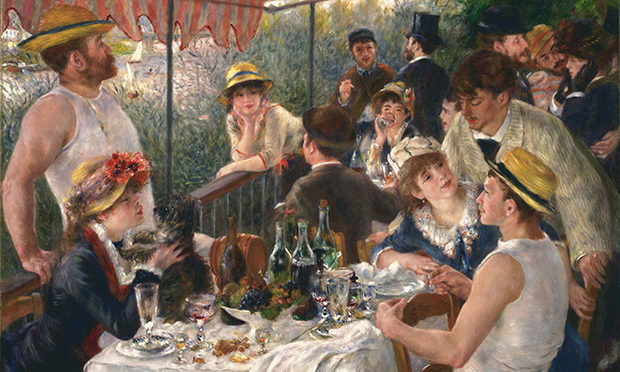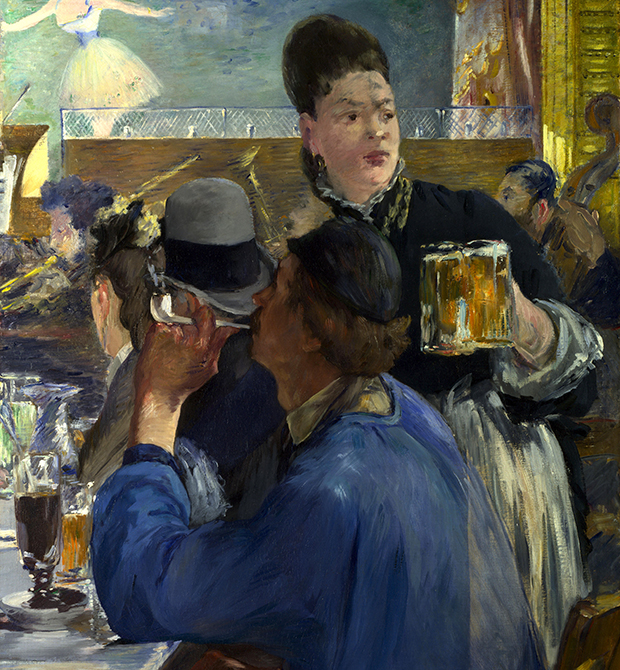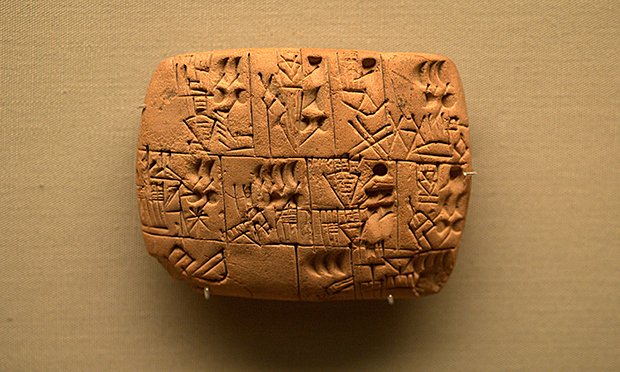Lockdown lunches and crowded picnics

Where will we all be a month from now? Munching cheerfully away in Hackney’s green spaces (leaving no litter of course), or crowded into a cheerful local restaurant, or cooped up at home?
Gustave Caillebotte conveyed the deadly tedium of solitary upper class dining in, while Auguste Renoir painted a relaxed party of young people at the end of lunch at a riverside inn, the Restaurant Fournaise at Chatou, glad to be enjoying themselves together in the open air.
The food hardly mattered, though scrutiny of the table shows that it was a conventional meal, served with the correct glasses and tableware, totally unmemorable. What delighted critics and friends was the easy-going mix of artists, writers, models, and the proprietor’s family, lounging around in the fresh air. Like us we hope.
Though our tastes are simpler. A smear of mustard on a slab of pie, anything in a bun, or an anonymous pasty, will do, so long as it’s with friends, and a drink or two – at a time when every restaurant reviewer in the land is telling us, ‘Well it’s not the food, not really, it’s the ambience, the togetherness, the friendly buzz of other eaters enjoying themselves, that counts’. This column thinks sod that for a lark.
Who needs the hassle of anxious reservations, the journey, sitting around, incomprehensible menus, more waiting? Then the bill. Ouch. The food has to be paramount to make it all worthwhile. Especially now.

We have most of us become quite good cooks, and with Hackney’s take-up of food banks and free school meals, we know that loss of work and wages, and food poverty from many causes, makes home cooking a necessity, not a gourmet activity, and eating out a rare pleasure, not a ‘too tired to cook’ thing. So balancing conviviality with hunger and thirst is a delicate topic.
Welcome to the Mesopotamian Beer Garden
When our leaders, many of whom have probably never set foot in a beer garden, urge us forth, let’s give a thought to these relaxed Mesopotamian civil servants or priests enjoying quite literally a jar after a hard day at the cuneiform face, drinking a cloudy brew through stout straws – tasty, comforting and healthy, and muddled with bits of debris from the twice-roasted barley bread, and a load of other stuff that made up this ubiquitous national drink.
No-one could have invented the weird processes that go to make a fine home brew, beer or ale, but it took genius to sniff the rotting remnants of two mouldy burnt loaves tossed into a bucket of water, and realise that this, with thousands of years of evolution and ingenuity, might become the life-blood of so many diverse nations.
Some resourceful Hackney makers of craft beer follow the poetic but somewhat vague indications in a hymn to the Mesopotamian goddess of beer Ninkasi – a hit in 1800 BC, but probably a version of a much earlier drinking song as far back as 2500 BC.

Enterprising brewers have boiled the hymn down to this description: ‘Ninkasi, it is you who handle the… and dough with a big shovel, mixing in a pit, the beerbread with sweet aromatics. You bake the beerbread in the big oven, and put in order the piles of hulled grain.
‘You water the earth-covered malt, guarded by noble dogs. Then you put the malt in a jar, where the waves rise, the waves fall. Then you spread the cooked mash on large reed mats to cool.
‘Ninkasi, it is you who hold with both hands the great sweetwort, brewing it with honey and wine, and put the sweetwort in the vessel. You place the fermenting vat, which makes a pleasant sound, on top of a large collector vat, and as you pour the filtered beer out of the collector vat, it is like the onrush of the Tigris and the Euphrates.’
Only an experienced brewer could make head or tail of this, but many do.
In the past, most housewives would brew healthy beer every week for the family, or fermented drinks, mead or metheglin, based on honey, herbs, water and yeast.
Kenelm Digby, a colourful character at the court of Charles I, who combined a cheerful hedonism with a serious scientific career, was naturally interested in cooking. His book, The Closet of the Eminently Learned Sir Kenelme Digbie Kt. Opened, had over 20 recipes each for mead and metheglin.
The fermentation and other processes involved produced a drink much safer and healthier than water, full of good microbes and bacteria.
Now that our tap water is safer and cheaper than the costly concoctions of the soft drinks industry, we can quaff it with impunity and enjoy Hackney’s finest in our very own beer gardens.
